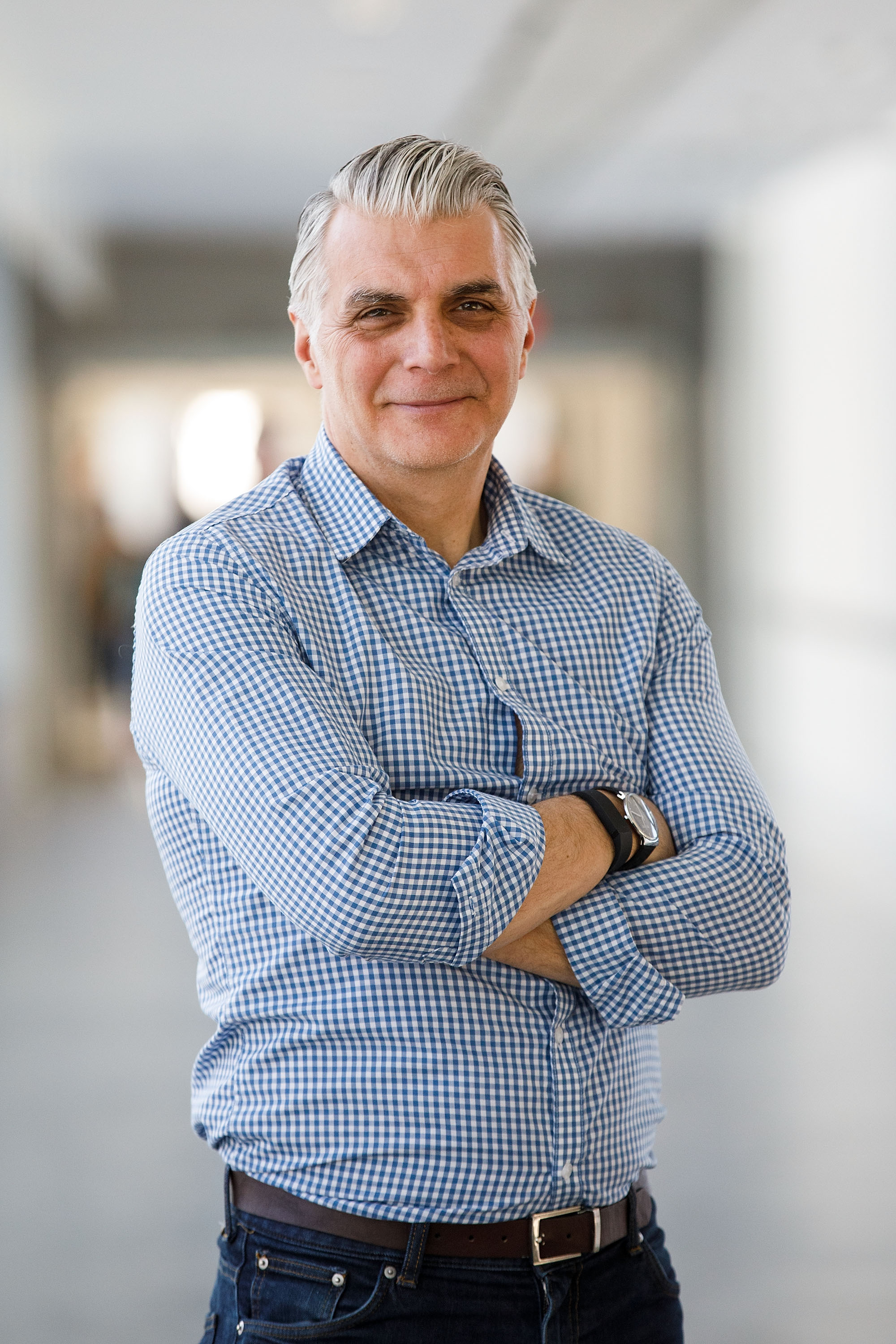
Professor Greg Kawchuk is coordinator the first feasibility trial of GLA:D™ Back in Canada on Feb. 9 and 10 at Corbett Hall. (Photo: Codie MacLachlan)
When Greg Kawchuk accepted an invitation to travel to Denmark to be an external examiner for a PhD defense in 2010, he didn't know that eight years later he would be bringing back a world-renowned osteoarthritis treatment plan-the first of its kind.
But that's exactly what happened.
What started out as a one-time visit to the University of Southern Denmark (SDU) has evolved into an adjunct position that takes him international in May and November of each year.
Over the last year, he has been working with the SDU developers of Good Life with Osteoarthritis: Denmark (GLA:D®) to implement a new trial of the GLA:D™ Back program in Canada. More specifically, in his professional home of University of Alberta, Faculty of Rehabilitation Medicine's Corbett Hall.
"Since my first days at SDU, the collaboration between our two institutions has grown steadily. Two years ago, they honoured me with an adjunct professor position, which has taken our work together to the next level," explains Kawchuk, a professor in the Department of Physical Therapy, Faculty of Rehabilitation Medicine. "Before I knew it, we were working out the details for the first English language implementation of GLA:D™ Back to be conducted right here in Alberta."
The feasibility trial, known as the GLA:D™ Back Pilot, will be taking place on February 9 and 10 at Corbett Hall, with the help of Bone and Joint Canada, GLA:D® Back developers from Denmark, the Alberta Bone and Joint Health Institute, Physiotherapy Alberta, the Alberta College and Association of Chiropractors and Rehab Med's Jackie Whittaker and Allyson Jones. Together, they will provide training to physiotherapists and chiropractors from 20 clinics across the province. Once the training is complete, clinicians have two months to run a trial of the program with patients.
"The GLA:D™ Back program has three pillars: patient education, structured exercise and data collection," says Kawchuk. "It's really important that as researchers, we have that data component to see how patients are responding. At the end of the day, we can't hope to change what we can't measure."
Once implemented, the program will run as a group class format with two education sessions and eight weeks of structured exercises. At the end, participants will be given a final evaluation to see how their pain is being managed.
Kawchuk believes the standardized package approach will help get clinicians on the same page.
"The education component about back pain is really critical to the program. Lots of people with back pain and those who treat it have a wide range of ideas about what back pain is and isn't. This program, which is derived from the latest evidence, creates a tidy package easily adopted by both participants and clinicians that provides a better understanding of back pain and what can be done to improve function, movement and discomfort," says Kawchuk.
"In the related GLA:D™ Hip and Knee program, we're beginning to see that patients who take the program often stick together to train even after their eight weeks are over. They continue to support one another, completing their exercises every week. So really, there's two great outcomes of this program: standardized treatment in the interim and support group creation in the long term."
While Kawchuk is coordinating the training, his master's student James Lemieux will be taking on the study as his master's project. Once the study has been complete, the hope is that a provincial roll out will happen fairly quickly.
"We're really hoping we can get this going, data permitting," says Kawchuk. "If everything goes well, we're looking toward a September 2019 launch. So stay tuned!"